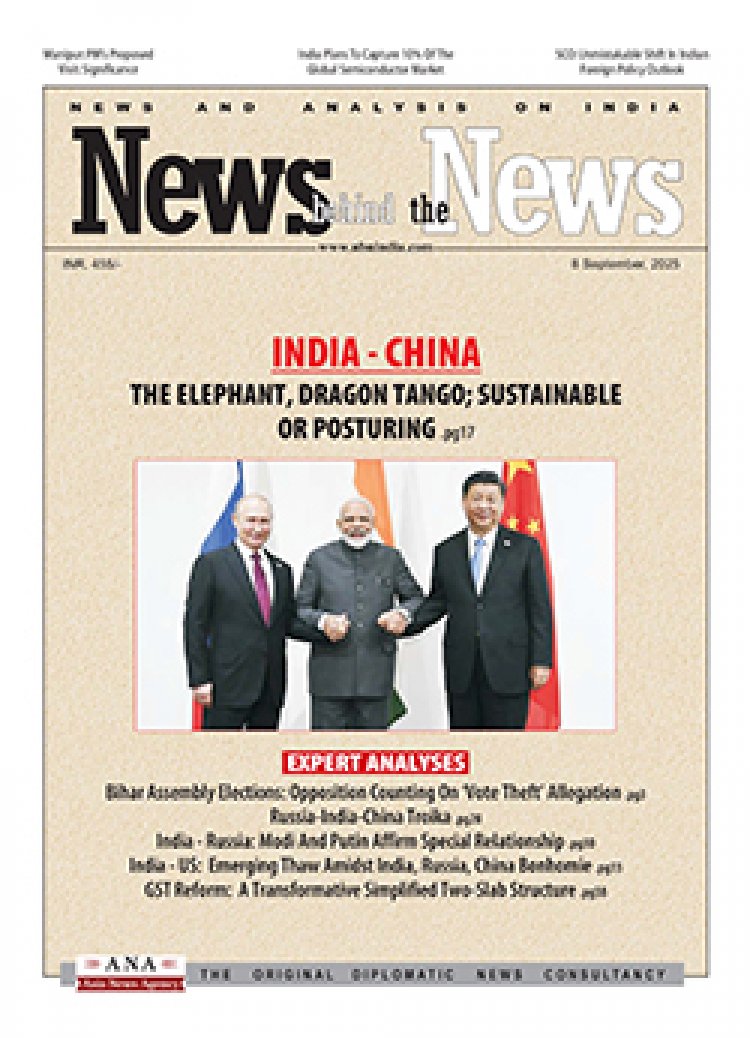Signs of economic recovery now visible
STORIES, ANALYSES, EXPERT VIEWS

Rajat Dhavan, McKinsey India’s managing partner says India is likely to see a ‘roaring 20s’, just like how the US economy was in the 1920s.
In an exclusive interview to ET, Dhavan said tell-tale signs of the 2020s being India’s decade have now become visible. Domestic consumption is back, the infrastructure public-investment build-out story is continuing, indicators also point towards the return of the private investment cycle after a gap of 10 years, and a confluence of proactive policies could help the country deliver on its manufacturing promise.
“We are very bullish on India. It wouldn't be surprising to see real GDP growth of about 8% in the coming years. With faster productivity gains, it could even get towards 10%,” he said.
India's growth spurt since opening up its economy following the second wave of the Covid-19 pandemic will continue, he added. “We see huge entrepreneurial ambitions in the Indian corporates, and we hope that MNCs really start to re-seize the India opportunity like they did with China some 10-15 years back. There's a very different degree of resolve about scale and ambition that we have started witnessing from Indian companies from January onwards,” he said.
Retail inflation in November at 4.91%
India's benchmark inflation rate, measured by the Consumer Price Index (CPI) firmed up to 4.91% year-on-year in November on the back of a rise in vegetable prices, data released by the Ministry of Statistics and Programme Implementation Monday showed. This was up from 4.48 per cent in October.
Core inflation, which is the non-food non-fuel component of the CPI basket, stood at 6.1% against 5.8% seen in the month before. Inflation in the food basket in November rose to 1.87% from 0.85% a month ago. Fuel & light inflation came in at 13.35% against a rise of 14.35% seen in October.
Worryingly, writes The Indian Express “inflation is expected to edge further upwards with the base-effect turning unfavourable over the next few months. Even as concerns persist over the durability of the economic recovery, elevated inflation is likely to complicate the policy choices before the central bank, limiting its space for manoeuvre.”
RBI may need a big rate hike: In this context, Gayatri Nayak (Assistant Editor, The Economic Times) writes “the Reserve Bank of India may be forced to raise interest rates at a faster pace than anticipated earlier as it would be forced to catch up with accelerating price pressures. The central bank may have to raise rates by as much as 100 basis points, up from 75 bps earlier as price rise spreads to services and consumer goods companies see 15 to 21 percent jump in their input costs.”
" Over the past few quarters, inflation across raw material categories has been unprecedented, with prices of some at a 40-year high" said Edelweiss Research. "Most companies too have taken sharpest price hikes in many years "
RBI’s Monetary Policy Committee has maintained its CPI inflation estimate at 5.3% for FY22 in its December meeting but has increased the estimate for Q3 from 4.5% to 5.1% and reduced the Q4 inflation from 5.8% to 5.7%.
Nomura expects inflation to rise further to ~5.5% y-o-y in December, and subsequently converge towards core inflation, at a shade above 6% in Q1 2022. It expects inflation which has risen due to both technical and fundamental factors to average 5.6% in 2022 from 5.2% in 2021. " We now expect the RBI to hike the repo rate by 100bp cumulatively in 2022, up from our previous forecast of 75bp, due to higher inflation risks" said Sonal Varma, chief economist, India, Asia (excluding Japan). Currently the repo rate- the rate at which it lends to banks at 4 per cent and reverse repo the rate at which it borrows from banks at 3.35 per cent remain unchanged since May 2020 as RBI has focussed on growth instead of inflation.
The impact of policy rate reduction is evident in lower interest costs as indicated in RBI's study of performance of the corporate sector. But these gains could be eroded due to higher input prices.
















